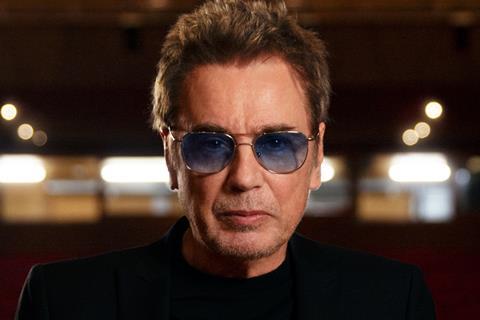
Jean-Michel Jarre, legendary composer, performer, producer and creator of immersive experiences, believes VR and immersive content is set to become the next art form to seduce global hearts and minds. He suggests it will sit alongside,rather than supplant, films, theatre and art.
Recently appointed president of the commission for digital creation for the CNC in France, Jarre is famous for staging mega concerts complete with laser displays, projects, fireworks and electronic, ambient and new-age tunes, He attended this week’s Geneva International Film Festival to pick up one of the festival’s three honorary plaudits, fittingly named the Film and Beyond award.
Jarre is also in town to support the world premiere of his VR experience The Eye And I, which he created with Taiwanese artist, Hsin-Chien Huang and delivered a masterclass on his work and creative methods to a packed Fondation Arditi, one of the Swiss city’s largest cinemas.
The Eye And I takes the VR headset wearer on an odyssey from a digital Panopticon prison system originated by the English philosopher and social theorist Jeremy Bentham in the 18th century. Designed to question the concept of free will, The Eye And I considers surveillance, being monitored and state control and interference.
The idea for the piece came after Jarre met and worked with US government whistleblower Edward Snowden a few years ago in Moscow where he created a piece of music to play as Snowden talked about the reason why he did what he did.
”The first time I heard Edward Snowden, he made me think about my mum, who was a great figure in the French Resistance [during the Second World War’,” Jarre, rather surprisingly, reveals. “ She told me when I was a kid, that ‘when you have governments or states generating ideas or acts, which could harm the community, some of us have to stand up against it.’ It’s exactly what Snowden said.”
Jarre wrote the script with Hsin-Chien, who used some music demos Jarre crafted while he was writing.
“To create a soundtrack for VR is a totally different exercise to doing a soundtrack for a movie, because in VR, the time of each scene is not fixed because it depends on the way and the time you’re spending as a part of the audience,” Jarre explains.
“You also have point of synchronisations which are not fixed as well. It’s a different exercise. I did the music, created some elements and then we put them together in Taiwan where Hsin-Chien Huang has a studio.”
The Eye and I is not Jarre’s first foray into VR and immersive experiences. In 2022 he released Oxymore, his 22nd album and an immersive concert that was simultaneously played at the Palais Brongniart in multichannel format and in VR on the social VR platform VRChat, bridging the gap between the real and virtual worlds. A New Year’s Eve concert in Notre-Dame garnered 75 millions views worldwide across all devices and media.
After the show, Jarre did a small Q&A with virtual avatar concert goers. “One girl, from Manchester, England was very engaged and asking lots of questions,” Jarre said. “She said she had danced throughout the concert, didn’t stand still the whole night. I later discovered that she was tetraplegic and it was the first concert she had ever attended. This makes me believe that VR is going to be an immensely important medium of expression.”
So firm is he in his belief that VR and immersive content will become another art form, Jarre has joined the CNC’s digital creation commission. “We meet four times a year and sift through all submissions to decide whether to help them financially or not,” he says.
The CNC offers support for development, pre-production and then production level for VR project proposals and Jarre steps out of the room if one of his projects lands. “Everything is transparent and clear,” he affirms.
Although VR partners easily with the gaming industry via the engine used to build the metaverse, and has a narrative process the same as film, Jarre is certain VR is a medium in itself.
“I’m a great believer in the fact that technology in history dictated styles in arts and not the reverse. We invented the violin [with which] Vivaldi created his music with, we invented the camera that Tarantino, Jean Luc Goddard, Fritz Lang used to make films.”
The emergence of immersive worlds and AI are creating a new grammar, new tools. “They are necessarily going to create new styles in the music field and the visual arts,” Jarre says confidently.























No comments yet